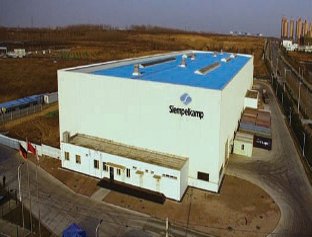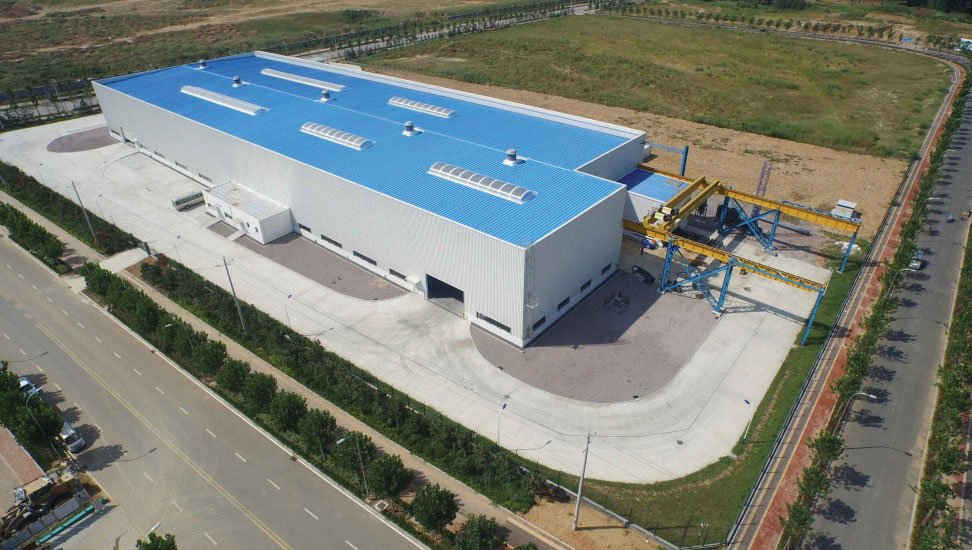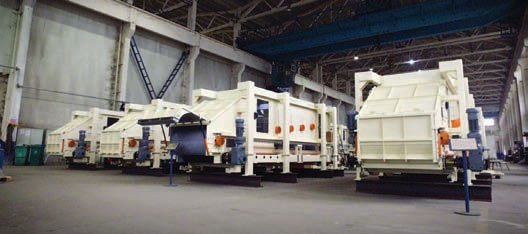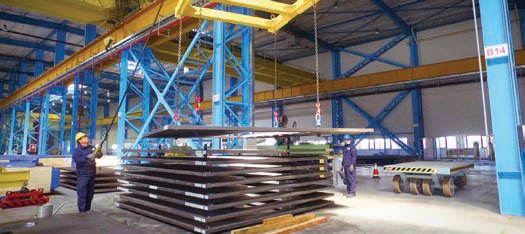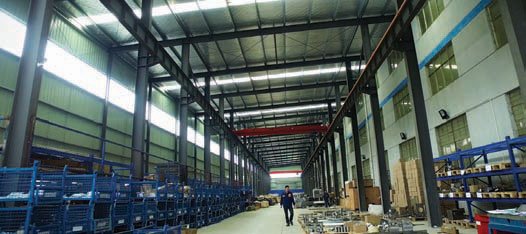Squaring the circle: samiron mondal
29 August 2017Siempelkamp, the German manufacturer, has set up two plants in China. It can produce machinery cheaply there – but can it maintain its good name for quality? Samiron Mondal is Siempelkamp’s man in China. WBPI spoke to him. Can he really produce German quality at Chinese prices?
China is an ever-expanding producer. New lines, it seems, start up there almost every month. Chinese machinery can be wonderfully cheap; but Chinese quality, of press and allied machinery, has no high reputation. German quality, on the other hand, is world-renowned – but expensive.
In October 2015 Siempelkamp’s largescale manufacturing site in Qindao, China, went operational. It joined the company’s nearby site in Wuxi. Both plants, says the company, produce parts to German quality standards. Clearly the last thing Siempelkamp would want is to imperil its reputation for outstanding reliability and engineering excellence. How then does it square the circle of manufacturing cheaply in China without damaging its unique selling point of Germanic quality and reliability?
The man charged with this seemingly impossible task is Samiron Mondal. He has been with the company for 14 years, as general manager for sales in India. He is also responsible for overseeing Siempelkamp’s Chinese operations. We caught up with him at Ligna and asked how he did it. Culture, he says, is all, and understanding different cultures is key to successfully working within them.
First we wanted to know about fareastern purchasers. Do they in general want cheap and cheerful home-manufactured presses and equipment, or something more sophisticated (and expensive)?
“In former times they wanted to buy from Europe. That made them feel safe. They knew the equipment would work, that there would be experienced help at hand for any problems that arose. The change has come in the past two years. The customers want those same assurances, but they do not want to pay the import taxes and costs associated with made-in-Germany machines. They want local service people, from their own culture, whom they can talk to more easily and freely about issues. And they want service and spare parts to be close by, so that spares do not have to be flown in, nor 15-hour plane journeys required for an engineer to reach them.
"So we need space within the country, and people in the country, and of course we need production facilities there.
"And if we are producing locally, of course we need high quality. Clients do not want bog-standard equipment from us. So everything has to be at a certain technical level, which we have to provide, and at a certain quality level. Siempelkamp absolutely has to be known for quality, for repeatability and for reliability.
"All of that means in turn that we also need project management in that country which we can carry out using local people.
And the trick is to have a know-how transfer, from our German way of doing things to our Asia operations. That gives us a very decent cost structure for our Asian products. Obviously it satisfies also our level of consistency and of quality control.
"So much so, that we are now exporting our Chinese products, made and preassembled there, to the rest of the world and to Europe. That was expected. And we show it to the world as ‘Produced in Asia.’ Asia is not only a potential market, it is a resource. We are not only using our assets in China or India for manufacturing for the local markets, we are also delivering them to our clients worldwide.”
Cheap and cheerful, or quality goods? “German quality is king. That is still the key.” So how does he demonstrate to potential customers that Chinese Siempelkamp quality is as good?
“I can take them round our factories. I can show them all the inspection programmes, all the efforts. I can introduce them to the teams at Qingdao and at Wuxi, the team quality inspectors and engineers. Our customers can meet them all. And at some point they will start believing.
"It is not easy, but my belief is that the quality there has a very very satisfying standard. And, as I say, I am shipping it out. "European buyers could look at a Chinesemade machine and its quality would not differ. But there are certain technologies that it would not have, that we want to keep here in Germany. Especially these are our inventiveness and our new techniques.
"The forming line, the press line the finishing line – those are what we do in China. For a complete plant – Siempelkamp of course has sold many such – we can source front and back end with Chinese partners, depending on what the client wants. Electronic control we usually do from Europe.”
A question begs to be asked. If German quality can be made in China, at Chinese prices, what future is there for manufacturing in Germany, or in Europe? Will not the European panel-press industry go the way of, for example, the UK car industry in the 1960s, when Japanese makers first copied , then outdid it, in both quality and pricing – and for a considerable period left UK companies making outdated, poor-quality vehicles at too high prices? In other words, if Siempelkamp can make things just as good but cheaper in China, why stay in Germany at all?
Semiron’s answer was implied in the paragraphs above. “Complexity and technologies are different in European demand. With high labour costs and customers demanding ever-moresophisticated end products, for European panel-makers every possible efficiency saving is worth the investment.
“We have fantastic German engineers. The new technologies you see here at Ligna will be always produced by our German resources.” And he addresses the car-making comparison: “The UK’s manufacturing base declined because it was less innovative than in Japan. Siempelkamp sets very great store on its innovation – and that we shall keep in Germany. You will find our innovations in lines in Asia but the source of the innovations is in Germany.”
So far we have mentioned the importance of culture, but have hardly touched on how cultural transfer can happen. How does a factory in China end up with the mind-set of its German mother?
“It is not an easy task, to set up production , to get people to work together over cultural differences But our factories are running on overtime, so we seem to have achieved success.”
Patience seems to be part of it. Samiron has been in China for five years. “You cannot be The Big Professor telling people what to do. It is a much gentler process, a more constant improvement. For every fragment that we impart, we learn as much from our Asian neighbours and friends.
"I have learned things about efficiency. I have learned that there are many more things possible than we have even thought about. One thing in particular I have learned: that the adoption of knowledge is exponentially fast in Asia.
"For the company, for Siempelkamp, the immediate future in Asia is very simple. We have to work on enhancing our manufacturing skills in China, embracing the export possibilities and expanding our business. I want 30% market share there; we have 10 – 15% of it now. We are looking at five to six new lines from 2017.
"Where will we, and the country, be ten years from now? It is hard to tell. If you look at the developments in China in the past 20 years it is almost impossible not to take the view that it will be very different indeed.
"China has just built its own commercial passenger jet aeroplane. " It had its maiden flight in May, a month after the launch of China’s first domestically-built aircraft carrier. "Given that, who can dare to say they cannot reach quality standards such as are found in Germany?
"However there is still a technological edge in Germany and Europe. That gap is the key factor.
“The globalisation process is happening and will continue. That does not mean that German industry is doomed. It means we shift to a different way of working. The products from Germany must have a certain degree of complexity and technology.
Therefore Siempelkamp is putting a lot of effort into innovation and technology, new products and efficient presses and processes. Otherwise we will be competing with someone who can do the same thing at half the price.”
